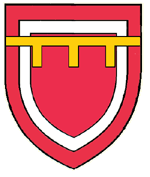|
Family Links
|
|
Spouses/Children:
Unknown
|
|
|
Eustace de Balliol
- Born: Abt 1155, England
- Marriage: Unknown
- Died: After 1209, Bernard Castle, Gainford, Durham, England
 Another name for Eustace was Eustace de Helicourt. Another name for Eustace was Eustace de Helicourt.
 Information about this person: Information about this person:
• Web Reference: Eustace de Balliol from Wikipedia.
Eustace de Balliol (or Eustace de Helicourt) (died c. 1209) was the cousin and successor of Bernard II de Balliol, lord of Balliol and Barnard Castle. He was the lord of Helicourt in Picardy, an estate near the chief seat of the main Balliol line at Bailleul-en-Vimeu; after his cousin died childless, in 1190 Eustace de Helicourt took over those estates.
• Web Reference: History of the Earl Baliol Family.
• Web Reference: Balio from the 1911 Edition of Encyclopædia Britannica.
Barnard de Baliol, built a fortress in Durham called Castle Barnard, around which the town of Barnard Castle grew. The first burgesses probably obtained their privileges from him. Bernard fought for King Stephen during the civil war, was present at the battle of the Standard in August 1138, and was taken prisoner at the battle of Lincoln in February 1141. The date of his death is uncertain. Dugdale only believes in the existence of one Bernard de Baliol, but it seems more probable that the Bernard de Baliol referred to after 1167 was a son of the elder Bernard, and not the same individual. If so the younger Bernard was one of the northern barons who raised the siege of Alnwick, and took William the Lion, king of Scotland, prisoner in July 1174. He also confirmed the privileges granted by his father to the burgesses of Barnard Castle, and was succeeded by his son Eustace. Practically nothing is known of Eustace, or of his son Hugh who succeeded about 1215.
• Background Information. 1256
Bernard was succeeded by his son Eustace, who in 2 Richard I, gave £100 for license to marry the widow of Robert Fitz Piers, and fifty marks to have livery of the lordship of Mere. Eustace was succeeded by his son Hugh, heard of in 1212, 1216 and 1217.
~Cartularium Abbathiae de Whiteby, pp. 54-55
|

 Another name for Eustace was Eustace de Helicourt.
Another name for Eustace was Eustace de Helicourt.